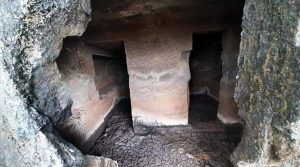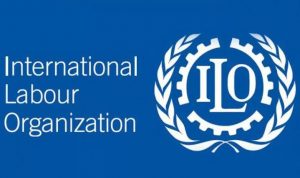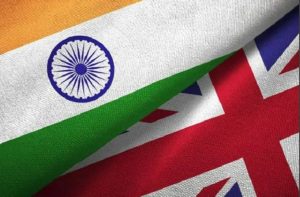Today Current Affairs: 4th June 2021 for UPSC IAS exams, State PSC exams, SSC CGL, State SSC, RRB, Railways, Banking Exam & IBPS, etc
Table of Contents
SINOVAC Covid Vaccine: China:

The World Health Organization approved China’s SINOVAC Covid vaccine for Emergency Use Listing, EUL. This makes SINOVAC the 8th vaccine to receive EUL from the WHO.
- WHO’s Emergency Use Listing (EUL) is a prerequisite for COVAX Facility vaccine supply and international procurement. It opens the door for the jab to be used in the COVAX program, which aims to ensure fair access to vaccines.
- The vaccine is produced by the Beijing-based pharmaceutical company Sinovac.
- The Sinovac-CoronaVac product is an inactivated vaccine (The disease-carrying virus or bacterium, or one very similar to it, is inactivated or killed using chemicals, heat, or radiation).
- Its easy storage requirements make it very manageable and particularly suitable for low-resource settings.
Three More Caves Found In Trirashmi Hill In Nashik:

The Archaeological Survey of India (ASI) has found three more caves in Trirashmi hill in Nashik where the Trirashmi Buddhist caves — also known as Pandav Leni — are located.
- The antiquity of the caves is yet to be established; archaeologists studying them, however, believe they could be older than the Trirashmi caves.
- These caves may have been dwellings of Buddhist monks.
- All the caves have verandahs and the characteristic square stone platform for monks. There are special arrangements for monks to meditate, similar to the Kanheri and Wai caves.
Trirashmi caves:
- The Trirashmi or Pandav Leni caves are a group of 25 caves that were carved out of Trirashmi Hill between the 2nd century BC and 6th century AD.
- The caves complex was documented in 1823.
- It is now an ASI-protected site and a tourist destination.
- The Buddhist sculptures and caves (in Nashik) are a early example of Indian rock-cut architecture representing the Hinayana tradition of Buddhism
Ranjitsinh Disale: Advisor To The World Bank:

Ranjitsinh Disale, the first Indian teacher to receive the Global Teacher Award has been appointed by the World Bank as an Advisor to the World Bank.
- The World Bank has appointed 12 advisors from world over and Mr. Disale is one of them representing India. He will be an advisor to the World Bank till December 2024.
- World Bank has recently launched the Global Coach Program, a new initiative focused on accelerating learning by helping countries improve in-service teacher professional development (TPD) programs and systems.
- This program forms part of the World Bank’s broader agenda to tackle the global learning crisis (WDR, 2018).
- Coach focuses on supporting countries improve in-service TPD through a two-pronged approach.
- The Coach program focuses on helping countries transform their TPD programs and policies to ones that adhere to a set of four key principles that have been shown to be linked to improved teaching quality.
- Disale’s work through the Advisory Board will impact the work World Bank on the ground, currently supporting over 18 million teachers around the world.
SDG India Index 2020-21: NITI Aayog:

The third edition of the Sustainable Development Goals (SDG) India Index and Dashboard 2020–21 was released by NITI Aayog.
- The SDG India Index 2020–21 is developed in collaboration with the United Nations in India.
- The NITI Aayog launched its index in 2018 to monitor the country’s progress on the goals through data-driven assessment, and foster a competitive spirit among the States and Union Territories in achieving them.
- NITI Aayog has the twin mandate to oversee the adoption and monitoring of the SDGs in the country, and also promote competitive and cooperative federalism among States and UTs.
- The index represents the articulation of the comprehensive nature of the Global Goals under the 2030 Agenda while being attuned to the national priorities.
- In 2015, the UNs General Assembly adopted the 2030 Agenda for Sustainable Development.
- The 17 SDGs are a bold commitment to finish what the Millennium Development Goals (MDGs) started, and tackle some of the more pressing challenges.
- The SDG India Index 2020–21 is also live on an online dashboard, which has cross-sectoral relevance across policy, civil society, business, and academia.
National Analysis:
- The country’s overall SDG score improved by 6 points – from 60 in 2019 to 66 in 2020–21.
- Currently, there are no states in the aspirant and achiever category; 15 states/UTs are in the performer category and 22 states/UTs in the front runner category.
- India saw significant improvement in the SDGs related to clean energy, urban development and health in 2020.
- However, there has been a major decline in the areas of industry, innovation and infrastructure as well as decent work and economic growth.
State Wise Performance:
- Kerala retained its position at the top of the rankings in the third edition of the index, with a score of 75, followed by Tamil Nadu and Himachal Pradesh, both scoring 72.
- At the other end of the scale, Bihar, Jharkhand and Assam were the worst performing States.
- However, all States showed some improvement from last year’s scores, with Mizoram and Haryana seeing the biggest gains.
World Employment And Social Outlook Trends 2021 Report: ILO:

The International Labour Organisation (ILO) has released the World Employment and Social Outlook: Trends (WESO) report 2021.
Impact of Covid:
- It has pushed over 100 million more workers into poverty worldwide. The world would be 75 million jobs short at the end of this year compared to if the pandemic had not occurred.
- Relative to 2019, an estimated additional 108 million workers are now extremely or moderately poor, meaning that they and their family members are having to live on less than USD 3.20 per day (It is the World Bank poverty line for lower-middle-income countries) in purchasing power parity terms.
- The sharp increase in poverty rates is due to lost working hours as economies went into lockdown, outright job losses, and a decline in access to good quality jobs.
- Five years of progress towards the eradication of working poverty have been undone, as working poverty rates have now reverted to those of 2015.
Rising Inequality:
- The pandemic has exacerbated existing inequalities in the labour market, with lower-skilled workers, women, young people or migrants among the most affected.
Loss of Working Hours:
- Many people have held onto their jobs but have seen their working hours cut dramatically.
- In 2020, 8.8% of global working hours were lost compared to the fourth quarter of 2019 — the equivalent of 255 million full-time jobs.
- While the situation has improved, global working hours have far from bounced back, and the world will still be short the equivalent of 100 million full-time jobs by the end of this year.
Unemployment Rate:
- The unemployment rate of 6.3% this year (2020-21), falling to 5.7% next year (2021-22) but still up on the pre-pandemic rate of 5.4% in 2019.
Women’s Unemployment:
- Women have suffered disproportionate job losses while seeing their unpaid working time increase.
- The burden of intensified childcare and homeschooling activities has disproportionately fallen on them.
- As a result, women’s employment dropped by 5% compared with 3.9% for men.
Clean Energy Ministerial’s (CEM) Industrial Deep Decarbonization Initiative (IDDI):

India and the UK have launched a new workstream to promote industrial energy efficiency under Clean Energy Ministerial’s (CEM) Industrial Deep Decarbonization Initiative (IDDI) coordinated by UNIDO (United Nations Development Industrial organisation).
- It was launched in the ongoing 12th CEM (CEM12) Meeting, which is virtually hosted by Chile.
About 12th CEM Meeting:
- The objective is to infuse green technologies and stimulate demand for low-carbon industrial materials.
- India is committed to cut emissions intensity per unit of GDP by 33 to 35% by 2030 (stated in Nationally Determined Contributions).
- The commitment hinges on effective deployment of low carbon technologies in Energy Intensive Sectors like Iron & Steel, Cement, and Petrochemicals.
- Government policies have resulted in substantial savings in energy at the demand side such as AgDSM (Agriculture Demand Side Management program), MuDSM (Municipal Demand Side Management), etc.
About Clean Energy Ministerial (CEM):
- It was established in December 2009 at the UN’s Framework Convention on Climate Change conference of parties in Copenhagen.
- The Framework for the Clean Energy Ministerial, adopted at the seventh Clean Energy Ministerial in 2016, defines the CEM governance structure and outlines the mission statement, objectives, membership, and guiding principles.
Mega Food Park Scheme:

The Union Minister for Food Processing Industries virtually inaugurated the Indus Best Mega Food Park at Raipur, Chhattisgarh.
- It is built under the Mega Food Park Scheme. By this food park, about 5000 people will get employment and about 25000 farmers will be benefited.
- It was launched in 2008-09 to give a major boost to the food processing sector by adding value and reducing food wastage at each stage of the supply chain with a particular focus on perishables.
- The Ministry of Food Processing Industries is implementing the Mega Food Park Scheme in the country.
- Mega Food Parks create modern infrastructure facilities for food processing along the value chain from farm to market with strong forward and backward linkages through a cluster-based approach.
- Aim:
- To provide a mechanism to link agricultural production to the market by bringing together farmers, processors and retailers so as to ensure maximizing value addition, minimizing wastage, increasing farmers income and creating employment opportunities particularly in the rural sector.
- Approach:
- The Scheme is based on the “Cluster” approach and envisages creation of state of art support infrastructure in a well-defined agri/horticultural zone for setting up of modern food processing units in the industrial plots provided in the park with a well-established supply chain.
- Components:
- A Mega Food Park typically consists of supply chain infrastructure including collection centers (cc), primary processing centers (ppc) central processing centers (cpc), cold chain, and around 25-30 fully developed plots for entrepreneurs to set up food processing units.
- Financial Assistance:
- The central government provides financial assistance upto Rs. 50 Crore per Mega Food Park (MFP) project.
- The MFP project is implemented by a Special Purpose Vehicle (SPV) which is a Body Corporate registered under the Companies Act, 2013.
- SPV is a subsidiary company that is formed to undertake a specific business purpose or activity.
Blue-finned Mahseer: Moved From Endangered To The Least Concern Status:

The International Union for Conservation of Nature (IUCN) has moved Blue-finned Mahseer from Endangered to the Least Concern’ status on its Red List.
- The Mahseer belongs to the genus Tor, of which there are several subspecies to be found in India and in other range countries in South Asia.
- The Blue-finned Mahseer or Tor Khudree is one of the subspecies of the Mahseer.
- Mainly found in the Mota Mola river east of Pune. This species is also found in other rivers of the Deccan Plateau.
- The species is migratory; moving upstream during rains. It prefers clean, fast-flowing and well-oxygenated waters.
- Threatened by habitat manipulation, over-harvesting and competition from other fish species.
Significance:
- Freshwater Ecosystem Indicator:
- It is very sensitive to dissolved oxygen levels, water temperature and sudden climatic changes. It just cannot bear pollution.
- Cultural:
- They have cultural and religious significance as well as they are protected in ‘temple sanctuaries’ across India.
- Conservation Initiatives:
- Tata Power (private company) is involved in conservation of the blue-finned for 50 years in Lonavala (near Pune), Maharashtra.
Protection status:
- IUCN Red List: Least Concern
The Central Vigilance Commission (CVC):

The Central Vigilance Commission (CVC) has laid down a defined procedure to be followed by government organisations for getting vigilance clearance before employing a retired official on a contractual or consultancy basis.
- Before offering employment to retired All India Services and Group A officers of the Central government or their equivalent in other organisations owned or controlled by the Centre, vigilance clearance from the employer organisation, from which the officer has retired, should be obtained.
- In case a retired officer served in more than one organization, clearance has to be obtained from all of them where the person was posted in the 10 years prior to retirement.
- A communication seeking clearance should also be sent to the CVC.
- If no reply is received from the erstwhile employer (s) within 15 days of sending the communication by speed post, a reminder can be sent. If there is no response within 21 days, vigilance clearance should be deemed to have been given.
- If the employee is found involved in any vigilance-related matter or not cleared from the vigilance point of view, the erstwhile employer organization would be responsible for all consequential actions.
Two New Missions To Venus: NASA:

The last US probe to visit the planet was the Magellan orbiter in 1990.
- Now, NASA has announced two new missions to Venus. These two sister missions both aim to understand how Venus became an inferno-like world, capable of melting lead at the surface. These include:
1. Davinci+:
- The Davinci+ (Deep Atmosphere Venus Investigation of Noble gases, Chemistry, and Imaging) mission will:
- Measure the planet’s atmosphere to gain insight into how it formed and evolved.
- Determine whether Venus ever had an ocean.
- Return the first high-resolution images of the planet’s “tesserae” geological features (These features could be comparable to continents on Earth).
2. Veritas (Venus Emissivity, Radio Science, InSAR, Topography, and Spectroscopy):
- This mission will map the planet’s surface to understand its geological history and investigate how it developed so differently than Earth.
- It will use a form of radar to chart surface elevations and discover whether volcanoes and earthquakes are still happening.
International Nitrogen Initiative Conference:

The 8th International Nitrogen Initiative Conference (INI2020) was scheduled to convene in Berlin, Germany, from 3-7 May 2020. But, due to the pandemic, it was canceled last year and was held recently- virtually.
About the International Nitrogen Initiative Conference:
- Set up in 2003 under the sponsorship of the Scientific Committee on Problems of the Environment (SCOPE) and from the International Geosphere-Biosphere Program (IGBP).
- It is a triennial event that brings together scientists from around the world dealing with reactive nitrogen compounds in agriculture, industry, traffic, soil, water, and air.
- Objective: To stimulate exchange among policymakers and other relevant stakeholders of results, ideas, and visions to improve the future holistic management of reactive nitrogen.
- The program is currently a sustained partner of Future Earth.




